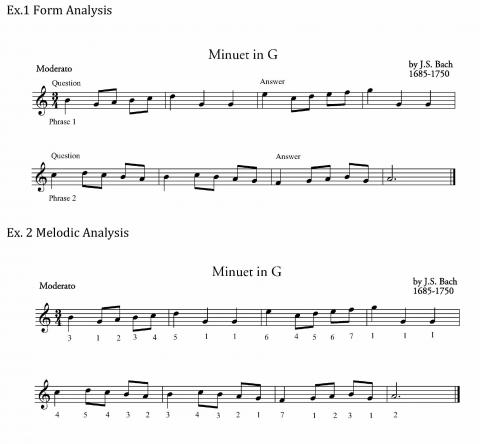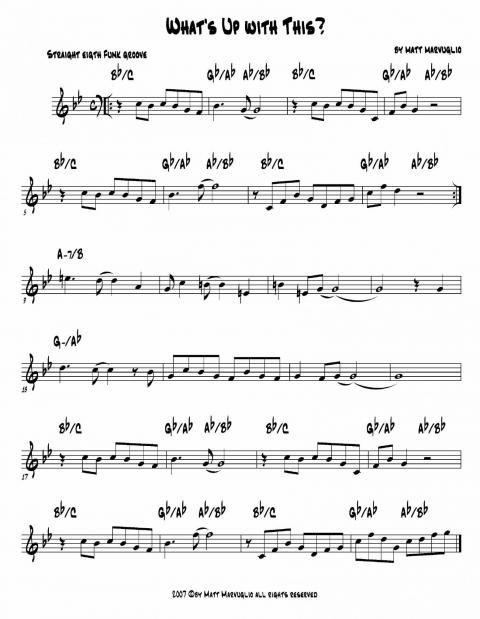Three Degrees of Memory

Flutist Matt Marvuglio is dean of the Performance Division at Berklee College of Music. He has traveled throughout the United States, South America, and Europe premiering his compositions for jazz flute and presenting clinics. Visit www.mattmarvuglio.com.
Most of us would agree that it’s pretty impressive for a musician to memorize all the music he’s going to perform at an audition. To learn written music well enough to play it confidently from memory is a daunting task and can create a fair amount of anxiety. Most musicians don’t like to memorize music for fear they will forget a passage. This lesson explores the process of memorizing music so you can gain greater confidence in your playing. Once you get hooked on these processes, you’ll want to memorize everything.
The mind works like a computer, or maybe it’s the other way around. Computer developers modeled the machine after our thought processes. Our short-term memory, or RAM, is the window through which we process information and store it in our long-term memory, or our hard drive. The more cues you use to process music, the more chances you’ll have to retrieve it.
Typically a performer’s memory lapses when a retrieval strategy breaks down, often because the performer hasn’t processed the music in enough different ways. If you rely on multiple systems and one breaks down, another can take over. Here are the three memory systems that you can use to internalize a piece of music:
• a visually based memory system enables you to visualize the notation and is developed by working with the written music;
• a tactile memory system involves recog-nizing familiar patterns and the sensation of fingering the music on an instrument. Most players easily recognize scale and arpeggio patterns and those who don’t read music rely heavily on this memory system;
• an aural memory system allows you to hear the music internally. Solfège clearly identifies the pitches in a systematic way and helps us strengthen aural perception.
You need to use all three systems and be aware of what you are seeing, feeling, and hearing when you practice. Also, it is important to isolate each system and put your music theory and solfège skills to use to fully understand the music. Musicians are often more adept in one memory system, which reflects how they practice and learn music. Let’s look at the following passage from J.S. Bach’s Minuet in G and process it through the different memory systems (see example 1).
A Visual Memory System
Before you start reading the example, you should look over the passage and answer the following questions:
•What is the tempo?
•What is the time signature?
•What is the key signature?
•Are there any chromatic alterations?
•Can I sing the rhythms to myself?
Once you’ve answered these questions, you are ready to play the example and then analyze the music you just played. Regarding structure, we have two four-measure phrases and, within each phrase, a question and an answer.
Utilizing this process builds foundational knowledge of the piece that will help you remember what you’re seeing on the page. Continue with the next memory system to reach a deeper understanding of the composition.
Tactile Memory System
Practicing scales and arpeggios in different patterns develops your tactile memory system and is very similar to learning vocabulary. The more you learn, the better you can express yourself. Play example 1 by fingering your instrument silently, focusing on the patterns and intervals. We already know that the tune is in G major, so we can focus on the different patterns in the key of G and not worry about any chromatic alterations, thus reducing the possibilities. I like to think of the patterns in terms of leaps and steps.
Let’s review what we just fingered. The first two phrases, comprising four bars, move as follows: leap, step, leap. The second phrase is predominantly stepwise movement with a leap one beat before the cadence. Finally, the whole passage is constructed from the G major scale. Moving on to the third memory system will complete the picture and really give meaning to the music.
Aural Memory System
One way to organize the melodies that you’re learning is to use a solfège system, which was invented to help monks remember melodies that weren’t written down. Of the two basic solfège systems, “fixed do” and “movable do,” I prefer to use movable do, where a syllable or number is assigned to each scale degree of a key. Our example is in G major, so the note G would be do, or 1, since it is the root of the key. Numbers identify the scale degrees found in the melody in example 2.
Next, sing the example without your instrument using the numbers for the scale degrees (you can use the solfège syllables instead). When doing this on more complex melodies, you may want to check yourself with your instrument. Do so until you can sing the melody without a pitch reference.
Wrap Up
Now that we have gone through the three-memory-system process with a simple melody, apply the principles to the unfamiliar and more complex melody in example 3B. See example 3A for my analysis of the the scales used in melody of the tune “What’s Up With This?”
Thinking about memorizing music with three systems will help you to have it firmly in your mind and at your fingertips. You will probably discover that one memory system works better for you than the others and that you can’t rely equally on each system. But as you memorize a piece, it is important to create a network of knowledge to gain a deeper understanding of the music. If one system should fail, you can rely on another. Now, don’t forget!






